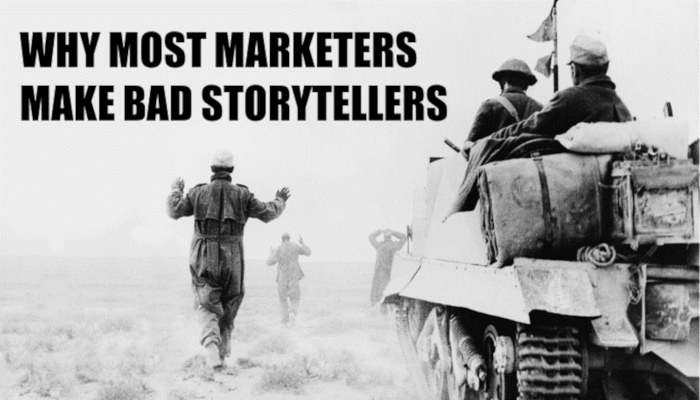
I founded the StoryHow™ Institute to teach business communicators how to tell their stories. My goal was to create a method for building a story that used familiar language instead of entertainment terms such as inciting incident, rising action, falling action, or dénouement. When was the last time you used dénouement in a business meeting?
Yet, at times, “squishy” words are unavoidable. For example, great storytellers have empathy for their audiences. Such soft terms rarely survive in an environment of colorful phrases such as “dog eat dog,” “kill or be killed,” or “the fast and the dead.” As a result, marketers typically don’t treat their audiences with empathy; they treat them as enemy combatants instead. If you don’t believe me, pay particular attention to the words marketers commonly use while planning.
“Okay, team. We’re gonna attack the marketplace with our campaign to target individuals so that they’ll engage with us and we can ultimately capture them.”
Marketing’s use of warfare terms to describe its relationship with customers says much about the motivation behind creating content for them. Instead of drawing inspiration from a place of empathy, we as marketers are predisposed to address our prospects as adversaries to be conquered. Storytellers, on the other hand, don’t seek to capture an audience’s attention; they seek to earn it. And therefore, marketers must change their approach if they want to use storytelling to connect with customers.
Empathy is gained by putting yourself in the shoes of others. Imagine yourself as a prospect who’s reading your company’s marketing copy for the first time. How does it look? Is it customer-relevant or just company-self-serving?
Dig beyond the traditional demographics with the following questions:
- What are your customers’ circumstances?
- What are their motivations? Where did those motivations come from? How can you use that information to help them get what they want?
- What are their blind spots? Might they need information delivered in a different way?
- What do they know? Can you build upon that knowledge?
- What do they need to know? Is there a foundational piece of content that they must read before they can proceed?
- What do they believe? What’s the source of that belief? Does the belief help or hurt them?
- What are their strengths? Weaknesses? How can you help them mitigate these risks?
- What are their frustrations? Can you help eliminate those frustrations?
- What questions do they have for you? Have you answered all of them? (Credibility bonus points for answering those that are either uncomfortable or you don’t want to answer.)
The more you know about your audience, the better your chance of relating with them. The closer you get, the more empathy you have, which ultimately guides the perspectives by which to communicate through story.
However, if you’d still prefer to organize campaigns to target, engage, and capture your audiences, it’s best to leave storytelling to the more empathetic within the organization.
Photo credit: Library of Congress